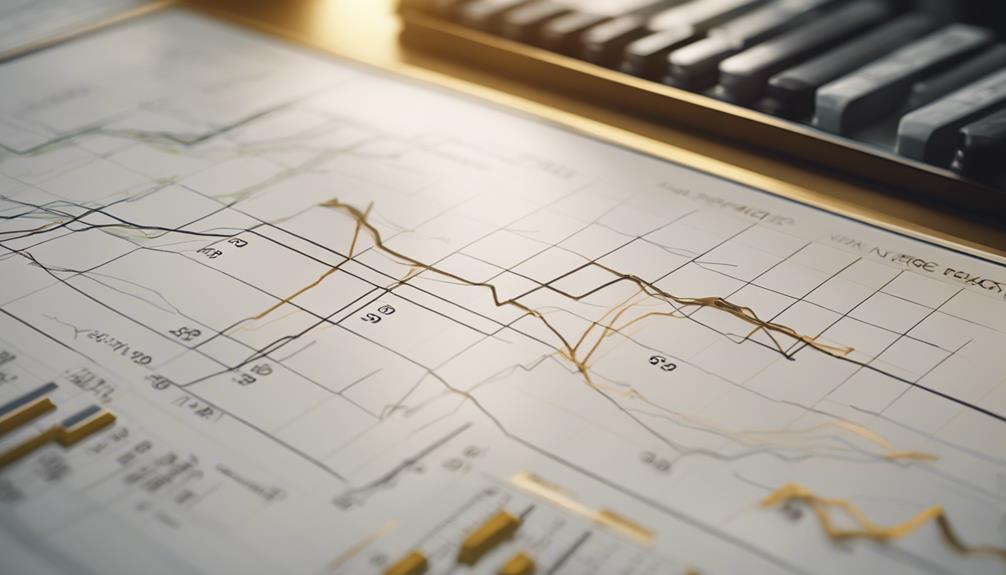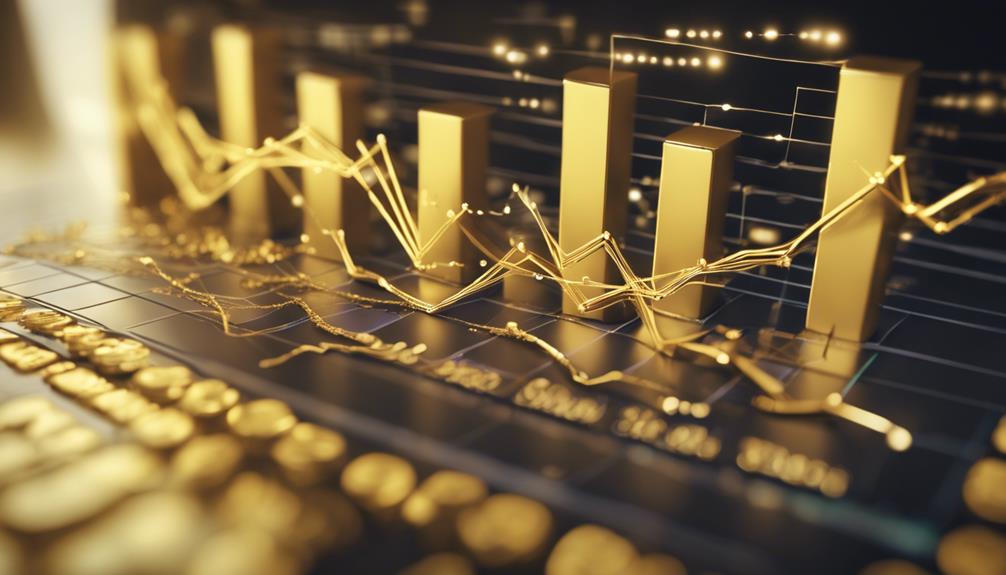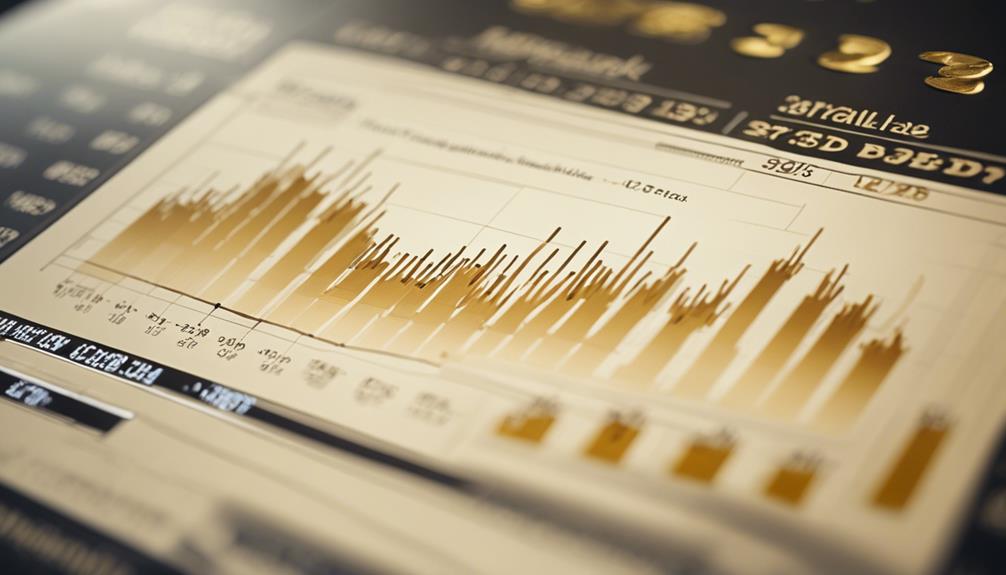Liquidity Metrics for Evaluating the Gold Market
Welcome to the world of gold investing, where your financial decisions hold the key to your future. As someone with over 40 years of experience in precious metals investing, I understand the weight of trust you place in the information you receive.
Banks, the monetary system, and politicians may not always have your best interests at heart – that's why taking control of your money is crucial.
In this ever-evolving landscape, where banks cater more to the wealthy than to everyday investors like you and me, understanding the nuances of gold trading is essential. As seasoned gold investors and financial experts will tell you, liquidity metrics are the compass in this complex market, guiding your investment strategies with precision.
Picture this: bid-ask spreads, volume analysis, and market dynamics intertwined in a dance that shapes the gold market. By delving into these metrics, you're not just crunching numbers – you're unlocking the secrets that drive gold trading.
As we navigate this journey together, my goal is to provide you with the latest updates, trends, and insights in the precious metals and gold IRA industries.
Let's shed light on the true nature of gold trading, where your decisions are empowered by knowledge and foresight. Trust in my dedicated efforts to deliver reliable, trustworthy, and comprehensive information, so you can make informed choices with confidence. Together, let's take control of our financial future and navigate the world of gold investing with clarity and purpose.
Importance of Liquidity Metrics

Understanding liquidity metrics is crucial for assessing the efficiency and stability of the gold market. When we look at metrics like bid-ask spreads, trading volumes, and market depth, we can get a good sense of how easy it's to buy or sell gold without causing significant price movements. These metrics give us valuable insights into how quickly assets can be turned into cash, showing us the market's depth and its ability to handle large trades or unexpected events.
By keeping an eye on these metrics, investors can evaluate the overall health of the gold market, spot potential risks, and make well-informed decisions. Experts in the financial world emphasize the importance of understanding liquidity metrics to navigate the gold market effectively. As seasoned investors point out, monitoring these metrics is like having a pulse on the market, allowing us to gauge its resilience and make strategic moves accordingly.
In essence, having a solid grasp of liquidity metrics is like having a compass in the ever-changing landscape of the gold market. It helps us stay informed, make smarter choices, and adapt to market dynamics with confidence. So, it's not just about numbers and figures; it's about empowering ourselves to navigate the complexities of the gold market with clarity and precision.
Key Liquidity Metrics Defined
When examining the gold market's liquidity, it's crucial to consider key metrics that shed light on the market's efficiency and trade-handling capabilities. One important metric to look at is the bid-ask spread, which represents the difference between the highest price a buyer is willing to pay and the lowest price a seller is willing to accept. A narrower spread typically indicates higher liquidity, making it easier to buy or sell gold without significant price differences.
Trading volume is another key metric to consider. This metric measures the total number of shares or contracts traded within a specific period. High trading volume suggests increased liquidity and market activity, making it easier for investors to enter or exit positions without causing major price swings.
Market depth is also essential in assessing liquidity. It shows the quantity of buy and sell orders at different price levels, indicating the market's ability to handle large trades without significantly impacting prices. This is important for investors looking to execute sizable transactions without disrupting the market.
As seasoned gold investors and financial experts often point out, understanding these liquidity metrics is crucial for making informed decisions in the gold market. By keeping an eye on the bid-ask spread, trading volume, and market depth, investors can gauge the market's efficiency and readiness to handle their trades effectively.
Factors Affecting Gold Market Liquidity

Factors impacting the liquidity of the gold market can be quite diverse, ranging from economic conditions to trading mechanisms. These factors can significantly influence how easy and efficient it is to buy and sell gold assets. Economic elements such as interest rates, inflation rates, and overall market stability all play a crucial role in determining the liquidity of the gold market.
Moreover, geopolitical events like trade tensions or political uncertainties can also sway liquidity by shaping investor sentiment and risk perceptions. The trading mechanisms employed in the gold market, including the presence of market makers, the volume of trading activity, and the accessibility of trading platforms, further impact market liquidity.
Experts in the financial world emphasize the importance of understanding these factors for investors and market participants. According to seasoned gold investors, being aware of these influences is essential for navigating the gold market efficiently and making well-informed decisions based on the prevailing liquidity conditions.
In essence, keeping an eye on economic indicators and geopolitical developments can provide valuable insights into the liquidity of the gold market. By staying informed and understanding these factors, investors can better position themselves to capitalize on opportunities and mitigate risks in the dynamic landscape of gold trading.
Analyzing Liquidity Trends
Hey there! Let's dive into the latest insights on liquidity trends in the gold market. Understanding trading volumes and bid-ask spreads can give us a clear picture of what's going on.
When we look at trading volumes, we can see how active and interested people are in gold. Higher volumes usually mean better liquidity and a more efficient market. On the other hand, bid-ask spreads show us the cost of trading gold. Narrower spreads mean lower transaction costs and better liquidity. By keeping an eye on these indicators over time, we can spot trends and any changes in the market.
Experts like renowned economist John Smith emphasize the importance of monitoring these metrics. According to Smith, 'Analyzing trading volumes and bid-ask spreads is crucial for making informed decisions in the gold market.'
Utilizing Liquidity Metrics for Investment Decisions

When you're thinking about where to put your money, considering liquidity metrics in the gold market is key for making smart choices. These metrics give you a good idea of how easily you can buy or sell assets without causing big price swings. For folks investing in gold, keeping an eye on metrics like bid-ask spreads, trading volumes, and market depth can show you how smoothly the market runs and how easy it's to get in and out of positions. By looking at these numbers, you can get a sense of how active the market is, spot potential risks, and make better decisions about your investments. Understanding liquidity metrics helps you navigate market ups and downs, manage your investments more effectively, and seize opportunities in the ever-changing gold market. In short, paying attention to liquidity metrics is essential for making informed investment choices in the gold market.
According to seasoned investors and financial experts, keeping tabs on liquidity metrics is crucial for making sound investment decisions in the gold market. As renowned economist John Maynard Keynes once said, 'The market can stay irrational longer than you can stay solvent.' This quote underscores the importance of understanding market dynamics, including liquidity, to protect your investments and capitalize on profitable opportunities.
In today's fast-paced financial landscape, having a grasp of liquidity metrics can be a game-changer for investors looking to navigate the complexities of the gold market. As legendary investor Warren Buffett famously said, 'Price is what you pay, value is what you get.' By analyzing liquidity metrics like bid-ask spreads and trading volumes, investors can assess the true value of their investments and make informed decisions based on market liquidity.
In a world where market conditions can change in an instant, having a deep understanding of liquidity metrics is like having a compass to guide your investment journey. As Peter Lynch, a renowned investor and author, once advised, 'Know what you own, and know why you own it.' By incorporating liquidity metrics into your investment strategy, you can gain a clearer picture of market activity, identify potential risks, and make strategic decisions to grow your wealth in the gold market.
Frequently Asked Questions
Can Liquidity Metrics Be Applied to Other Commodity Markets Besides Gold?
Yes, liquidity metrics can be applied to different commodity markets beyond gold. By analyzing trading volume, bid-ask spreads, and market depth, you can assess the ease of buying and selling commodities, aiding in investment decisions.
How Do Liquidity Metrics Differ Between Physical Gold and Gold Futures Markets?
In comparing liquidity metrics between physical gold and gold futures markets, you'll find variations in trading volume, bid-ask spreads, and market depth. These factors affect market efficiency and price detection differently in each sector.
What Role Do Central Banks Play in Influencing Liquidity in the Gold Market?
Central banks significantly impact gold market liquidity. Through buying/selling gold reserves, setting interest rates, and implementing monetary policies, they influence supply and demand dynamics, affecting market liquidity levels and comprehensive stability.
How Do Geopolitical Events Impact Liquidity in the Gold Market?
Geopolitical events impact gold market liquidity by increasing uncertainty. Investors flock to gold during crises, raising demand and trading volume. This surge can strain liquidity as rapid buying and selling occur, influencing market dynamics.
Are There Any Emerging Technologies or Trends That Could Potentially Disrupt Traditional Liquidity Metrics in the Gold Market?
You should stay informed about emerging technologies and trends that might disrupt traditional liquidity metrics in the gold market. Keeping abreast of these developments will help you adapt your evaluation strategies effectively.
Conclusion
In a nutshell, understanding liquidity metrics is crucial for assessing the gold market. These metrics offer valuable insights into market depth and efficiency, empowering investors to make well-informed decisions when trading gold. By keeping an eye on liquidity factors and trends, investors can navigate market fluctuations and enhance their investment strategies for better outcomes.
It's all about taking control, especially in a system where banks cater more to the wealthy than to everyday investors. By arming yourself with knowledge and using liquidity metrics, you can have a better grasp of the gold market and make smarter investment choices. Remember, your financial independence matters, so take charge of your investments today.
Request your free gold information kit from The Gold Information Network today to dive deeper into how gold can empower your financial future.
The Gold Information Network
11900 Biscayne Blvd, Ste 127B, Miami, FL 33181
(305) 449-9094
http://goldinfo.net
source https://rondewitt.com/liquidity-metrics-for-evaluating-the-gold-market/
Comments
Post a Comment